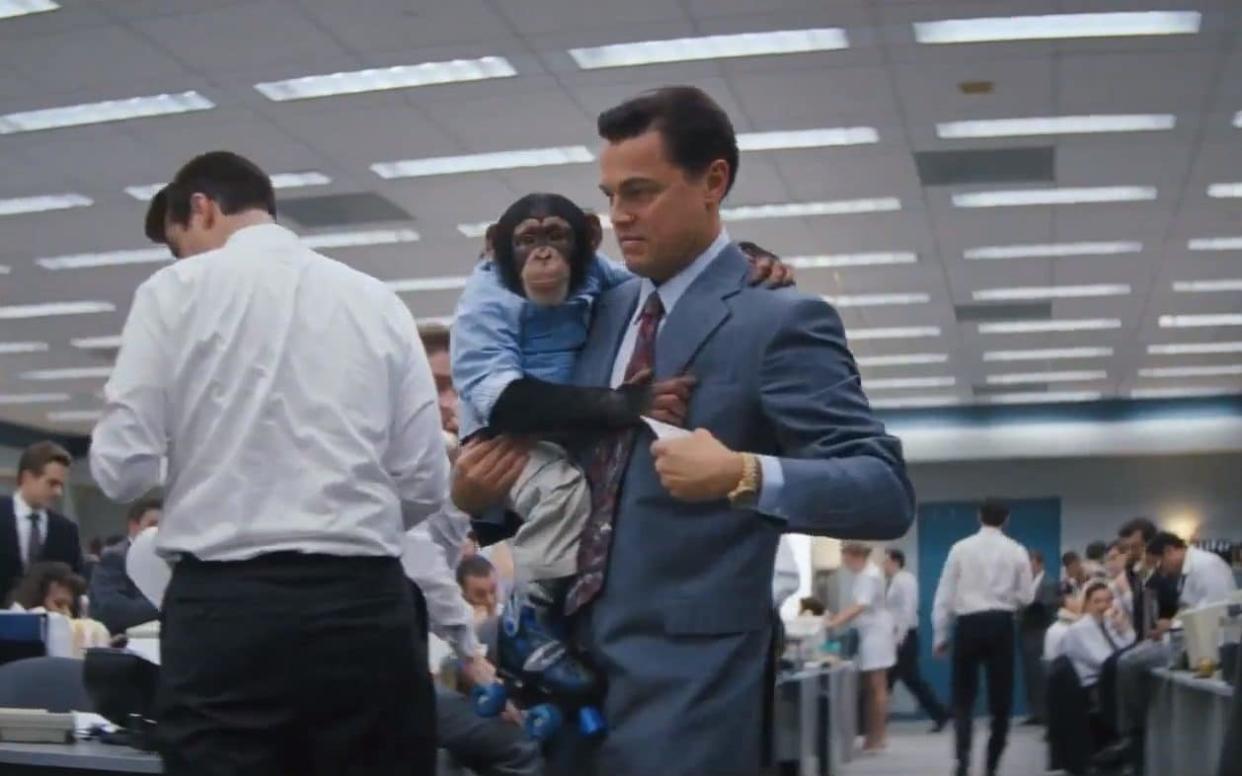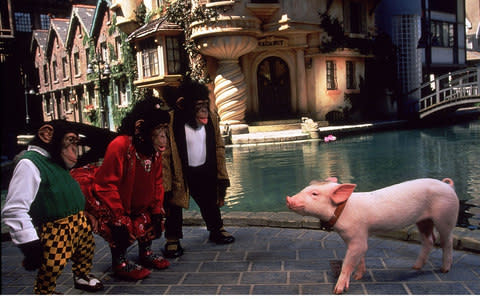Hollywood 'unethical' for starring chimpanzees and orangutans in films

Who can forget the high-fiving chimpanzee, smartly turned out in chinos and blue shirt, cavorting away with Leonardo DiCaprio and his gang of rogue traders in the 2013 biopic The Wolf of Wall Street?
Or Crystal, the drug-dealing capuchin monkey in Hangover II (2011), without which the plot simply would not have worked?
Or the ever-grinning mischief maker Dunston, the orangutan who wreaks havoc in a five star hotel in the 1996 comedy Dunston Checks In?
They are just three examples of a long Hollywood tradition of primate “actors”.
Now, however, scientists have said that using the species in films is 'unethical' and damages their welfare by fooling the public into thinking they are happy in human environments.
A new study by the University of Edinburgh directs particular criticism towards films which feature primates appearing to “smile”, as this is actually a sign of distress.
Backed by the UK charity Neotropical Primate Conservation (NPC), the researchers analysed two decades of English-speaking film trailers from 1993 to 2013.

It estimated that primates spent approximately 19 per cent of their time on screen grinning; they were clothed 50 per cent of the time and appeared alongside human companions 87 per cent of the time.
Published in the journal Anthrozoos, the study concludes that the “low but steady” frequency of use in mainstream films, many of which are aimed at children, fuels a “profound misunderstanding” about the suffering of primates in captivity.
The researchers even question whether fear is “actively elicited” by directors in order to induce the animals to smile.
“Far too often, well-meaning, animal-loving people fail to recognise the suffering of wild primates in captivity,” said Brooke Aldrich, the NPC trustee who led the research.
“Given how often people see images of “smiling” chimps or capuchin monkeys, apparently happy to be wearing a pirate suit or brushing their teeth, it’s not surprising.”
Approximately 1,500 primates are believed to be kept as pets in the UK and 15,000 in the US, according to the study, which noted that chimpanzees are currently the species most likely to appear in films, followed by capuchin monkeys.
A previous study indicated that 35 per cent of people mistakenly think chimpanzees are not in endangered as a result of their appearance in films.
The use of orangutans has decreased slightly, a trend researchers believe may be connected to better public awareness of their plight after some great apes were listed as critically endangered in 2016.
Until 2015, captive chimpanzees were not listed as endangered in the USA, making them easier to source.

In 2012, the Walt Disney Company prohibited the use of great apes as entertainers.
Despite this, in spring 2015, the company was using a capuchin despite the recent publication of a paper co-authored by one of its own science and environment team demonstrating that viewing images of capuchin monkeys in anthropocentric contexts increased their desirability as pets, and was correlated with confusion about their conservation status in the wild.
“As long as monkeys, apes and other primates continue to be depicted in this way, such misunderstandings are likely to continue,” said Ms Aldrich.
She warned that, as well as damaging perceptions about primate captivity, the animal “actors” may have suffered themselves.

 Yahoo News
Yahoo News 
